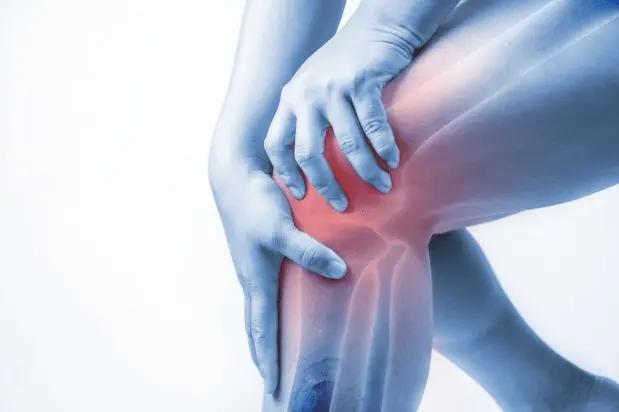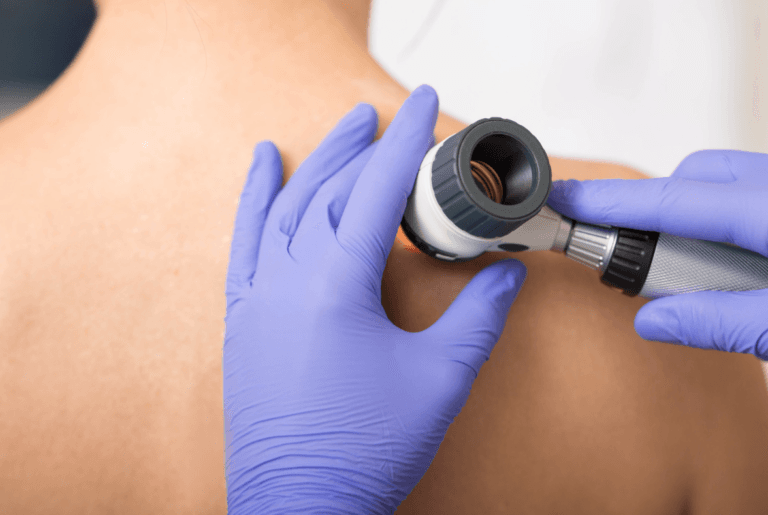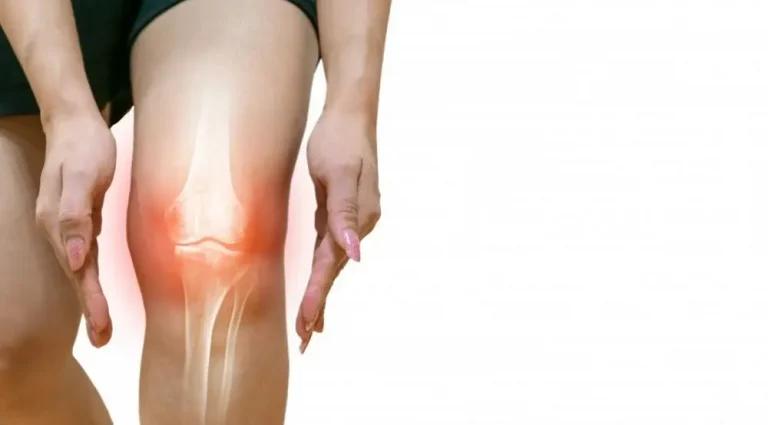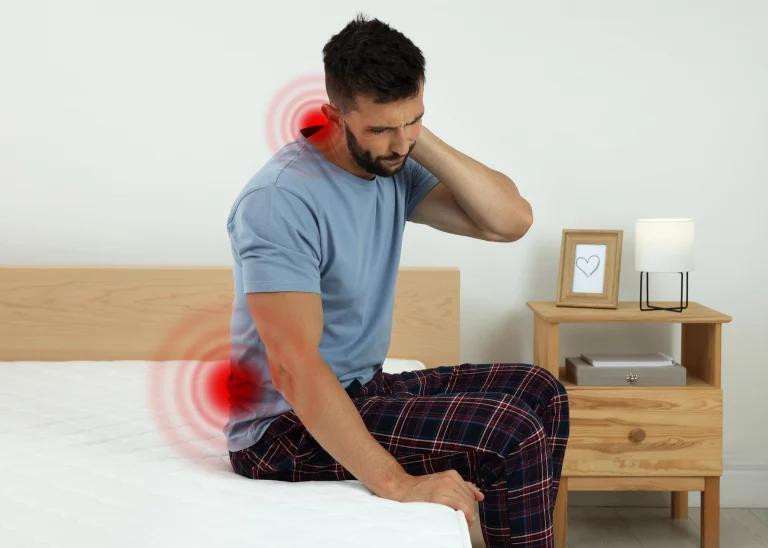Heel pain is a common complaint that many people experience at some point in their lives. The most common causes of heel pain are attributed to conditions such as plantar fasciitis, heel spurs, stress fractures, physical activity that causes stress on your feet or Achilles tendonitis. However, in rare cases, heel pain can be a sign of an underlying serious condition. It is important to consider all possible causes of any concerning symptoms, including the possibility of cancer.
In this article, we will explore two cautionary case reports of primary lung cancer presenting as foot pain. We will delve into the details of each case, discuss the diagnostic challenges faced by healthcare professionals, and highlight the importance of early detection and appropriate management.
Case report 1: Lung cancer presenting as heel pain
Background
Bone metastasis as the first symptom of lung cancer is common, especially in the axial skeleton. However, metastases to the calcaneus (heel bone) are rare. Chronic plantar heel pain (CPHP) is a common complaint that is often diagnosed as plantar fasciitis. This case study reports a female patient who presented with heel pain that was initially misdiagnosed as CPHP.
Case presentation
A 58-year-old female, a never-smoker, presented with left plantar heel pain that had been progressively worsening for six months. Initial diagnosis at a local hospital was CPHP, but there was no relief from the pain. Subsequent foot X-rays revealed a lesion in the calcaneus, which led to a biopsy and a diagnosis of adenocarcinoma. Unfortunately, the delayed diagnosis led to a higher degree of malignancy and limited treatment options. The patient succumbed to non-small cell lung cancer six months after the accurate diagnosis.
Discussion
This case highlights the importance of considering metastatic bone lesions in patients with foot pain, especially in the presence of risk factors such as a history of cancer or persistent symptoms that do not respond to conventional treatments. Clinicians should maintain a high level of suspicion and order appropriate imaging studies to ensure timely diagnosis and management.
Case report 2: Primary lung cancer presenting as foot pain
Background
While bone metastases of primary lung cancer are not uncommon, acrometastases (metastases to the hands or feet) are rare. Acrometastasis as the presenting feature of a primary cancer is even more unusual. Metastasis to the foot bones often presents with swelling, pain, and a limp. Gout is often suspected initially in these cases, leading to delays in diagnosis.
Case presentation
A 63-year-old male patient with a significant smoking history presented with pain in his right foot. Initially diagnosed with plantar fasciitis, the patient received treatment with nonsteroidal anti-inflammatory drugs (NSAIDs) and exercises. However, the pain persisted, and subsequent consultations led to a diagnosis of gout and a prescription of indomethacin. Further investigations revealed elevated inflammatory markers and a bone scan showed activity in the foot and ribs. A chest X-ray confirmed a mass in the lung, indicative of primary lung carcinoma. Despite radiation treatment for foot pain, the patient’s condition deteriorated rapidly, and he passed away within months of the initial presentation.
Discussion
This case emphasizes the importance of considering metastatic disease in patients presenting with foot pain, even in the absence of typical risk factors or symptoms. Family physicians should be vigilant and consider atypical features of common presentations, especially when initial treatment does not provide adequate relief. Prompt investigation and appropriate referral can help facilitate early diagnosis and improve outcomes.
Pain behind the heel
Several problems can lead to pain developing in the back of the heel. Common causes include:
- Achilles tendinitis: The Achilles tendon, which connects the calf muscle to the heel bone, can become inflamed due to overuse. It’s the body’s longest and strongest tendon. Athletes who engage in activities that involve repetitive jumping and running, such as runners and basketball players, are more prone to Achilles tendinitis. This overuse injury inflames the tendon
- Bursitis: Bursitis occurs when the fluid-filled sacs called bursae, which cushion joints and allow for fluid movement, become inflamed. Spending prolonged periods on your feet can lead to bursitis, causing a tender, bruise-like feeling in the back of the heel
- Haglund’s deformity: Chronic inflammation and irritation can result in an enlarged bony bump, known as a pump bump, forming in the back of the heel. Wearing shoes with higher heels, such as pumps, can exacerbate the bump and increase pain
- Sever’s disease (calcaneal apophysitis): This condition primarily affects active children between the ages of 8 and 14. Participating in activities that involve running and jumping increases the risk of developing Sever’s disease. The heightened athletic activity irritates the growth plate in the back of the heel
- Pain beneath the heel
Pain beneath the heel can be attributed to various conditions, including:
- Bone bruise (contusion): Stepping on a hard, sharp object can bruise the fat padding underneath the heel, resulting in tenderness when walking. Additionally, stress fractures and Sever’s disease may cause pain along the entire back, side, and bottom of the heel
- Plantar fasciitis: Plantar fasciitis is the leading cause of heel pain. It occurs when the connective tissue (fascia) that runs along the bottom of the foot becomes torn or stretched. Individuals who engage in activities that involve running and jumping are more susceptible to developing this painful condition
- Heel spurs: Chronic plantar fasciitis can lead to the formation of a bony growth (heel spur) on the heel bone. Although heel spurs are not usually painful, some individuals may experience discomfort.
Understanding the specific causes of heel pain can help guide treatment decisions and facilitate a faster recovery. Identifying the root cause allows healthcare providers to tailor treatment plans to address the underlying condition effectively.
Are there ways to prevent heel pain?
Prevention plays a crucial role in reducing the risk of developing heel pain. By implementing these preventive measures, you can safeguard your feet and minimize the likelihood of experiencing discomfort:
- Maintain a healthy weight: Excess weight places additional stress on your feet, increasing the risk of developing heel pain. Weight loss through proper diet and regular exercise can help alleviate this pressure
- Wear supportive shoes: Choose footwear that offers proper arch support and cushioning to minimize strain on your feet. Avoid high heels and opt for shoes with a wider toe box to allow for better foot alignment and reduced pressure on the heel
- Stretch regularly: Engaging in regular stretching exercises can help keep your foot and heel tendons flexible, reducing the risk of developing heel pain. Incorporate stretching into your daily routine, especially before and after exercise
- Avoid overexertion: Be mindful of your physical activity level and avoid overexerting yourself. Gradually increase the intensity and duration of exercise to allow your body to adapt and reduce the risk of developing heel pain
- Modify high-impact activities: If you participate in sports or activities that involve repetitive jumping or running, consider modifying your routine to include lower-impact alternatives. This can help reduce the strain on your feet and lower the risk of developing heel pain
- Choose appropriate footwear for physical activities: When engaging in sports or exercise, wear shoes specifically designed for that activity. These shoes provide the necessary support and cushioning to protect your feet and minimize the risk of injury. Consider putting special aids in your shoes for extra support, such as heel cups, orthotics (such as a brace or splint), or arch-of-the-foot supports
Conclusion
While heel pain is often attributed to benign conditions such as plantar fasciitis, it is crucial to consider the possibility of an underlying serious condition, such as cancer. The two cautionary case reports discussed in this article highlight the diagnostic challenges faced by healthcare professionals and underscore the importance of early detection and appropriate management. If you experience persistent or worsening heel pain, it is essential to seek medical advice to ensure timely diagnosis and treatment. Remember, early intervention can make a significant difference in outcomes.
Sources
- Lung cancer presenting as heel pain: A case report – PMC
- Primary lung cancer presenting as foot pain – PMC
Medical Disclaimer
NowPatient has taken all reasonable steps to ensure that all material is factually accurate, complete, and current. However, the knowledge and experience of a qualified healthcare professional should always be sought after instead of using the information on this page. Before taking any drug, you should always speak to your doctor or another qualified healthcare provider.
The information provided here about medications is subject to change and is not meant to include all uses, precautions, warnings, directions, drug interactions, allergic reactions, or negative effects. The absence of warnings or other information for a particular medication does not imply that the medication or medication combination is appropriate for all patients or for all possible purposes.
Related Articles
What are the risk factors for heel pain?
Several factors can increase your risk of developing heel pain. These risk factors include:
- Obesity: Being overweight puts additional pressure and strain on your feet, increasing the likelihood of experiencing heel pain
- Foot and ankle arthritis: Individuals with arthritis in their foot and ankle joints may experience heel pain as a result of inflammation and joint damage
- Flat feet or high foot arches: Abnormal foot structures, such as flat feet or high foot arches, can contribute to imbalances and instability, leading to heel pain
- Intense physical activity: Engaging in activities that involve running, jumping, or prolonged standing can put excessive stress on the feet, making you more susceptible to heel pain
- Improperly fitted shoes: Wearing shoes that lack proper arch support and cushioning can contribute to heel pain. Ill-fitting shoes can exacerbate existing conditions or lead to the development of new ones
By being aware of these risk factors, you can take proactive steps to prevent heel pain or reduce its occurrence. Maintaining a healthy weight, wearing supportive shoes, and practicing good foot care can significantly reduce your risk.
What are the most common causes of heel pain?
Heel pain can have various causes depending on the location of the pain. Understanding the underlying conditions that contribute to heel pain is crucial in determining the appropriate treatment approach. Let’s explore the causes of pain behind the heel and beneath the heel.









